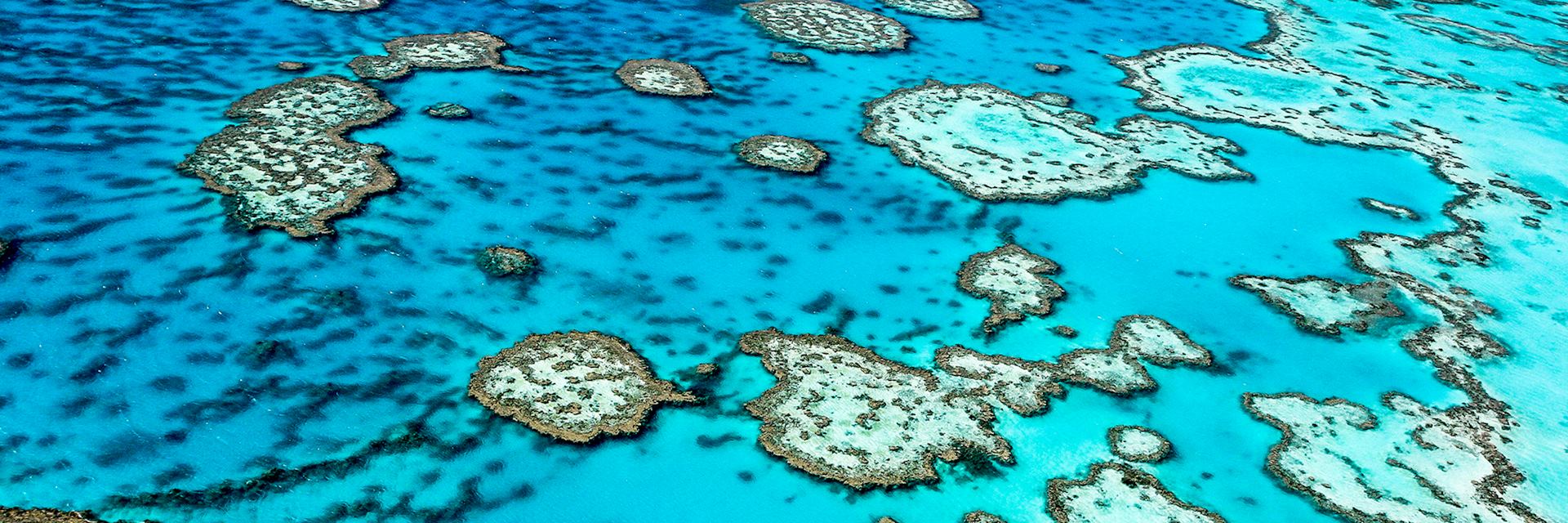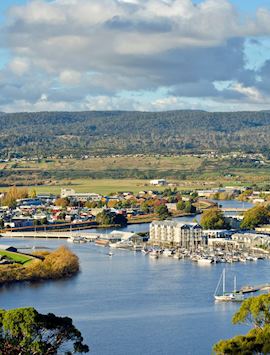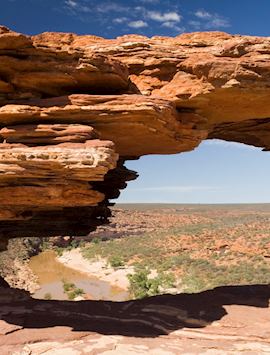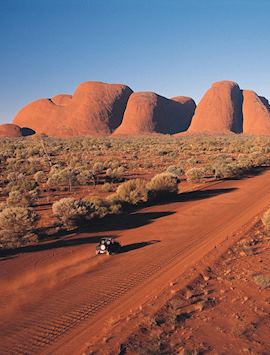From rainforests to deserts, mountains to the world's most spectacular coral reef, a country the epic size of Australia provides a vast and varied array of wild experiences for visitors.
Here, our specialists narrow down their personal highlights of Australia's wilderness, and show you the best ways to discover and explore the country's very great outdoors.
Hitting the waves, Bondi Beach, Sydney by Amanda
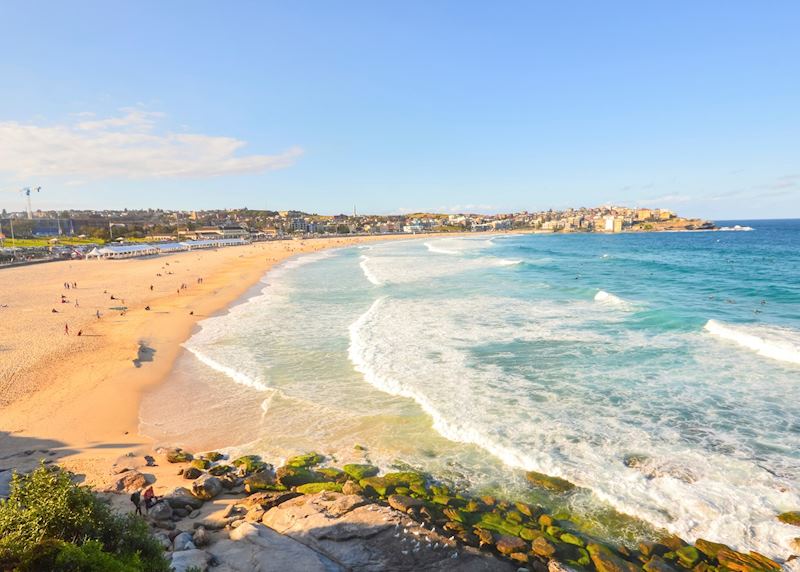
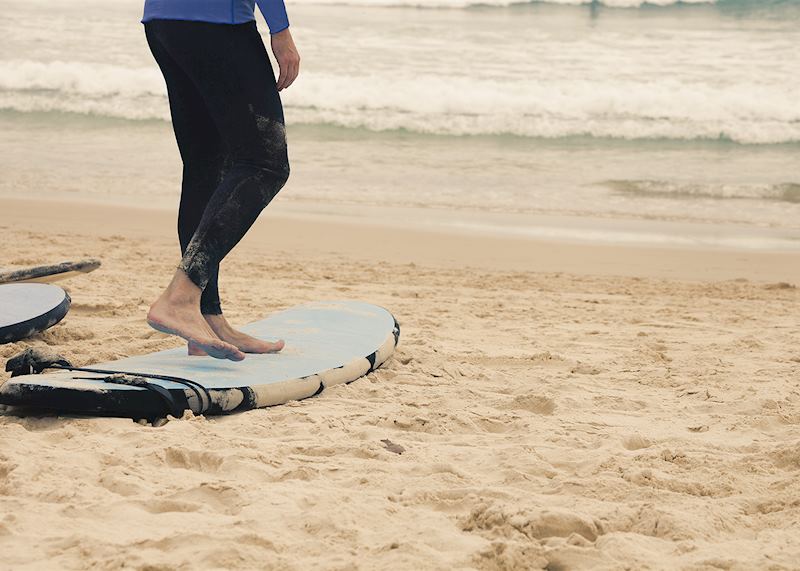
When I found out one of the first activities I would be doing on my most recent trip to Australia was surfing, I was very excited and equally as terrified. In general, I refuse to go into the ocean above my head due to a slightly irrational fear of sharks and everything else lurking in the ocean. However, I didn’t want to have to tell Audley travellers that I chickened out when I had the chance to go surfing at Bondi Beach — and what better activity is there to get a true Australian experience? Sun, sand and surf. It had to be done.
I arrived early to watch the surfers in the hope that I could pick up some tips from the professionals. My lesson began with the instructor asking us if anyone had ever been snowboarding, wakeboarding, or paddleboarding before. Fortunately, I had experience of all those things which gave me an instant boost of confidence and feeling that I’d be able to tackle surfing with no trouble. My moment of self-satisfaction didn’t last long as he went on to explain, 'none of that will help you today'.

Brought back down to Earth with a bang, my first couple of tries proved this point and were complete failures which resulted in me drinking a lot of water. Two things became clear very quickly. First, it was best that I stuck to my day job. Second, paddling is exhausting and I could probably spend a little more time at the gym. The instructor kindly told me that if I wanted to go back to the beach and practice a little more I could. I politely declined the offer, determined to prove to myself that I could do it, and paddled (slowly) back out to the ocean.
It was on my third attempt that I succeeded and rode a wave all the way to the beach. I was so proud of myself, I threw my hands up in triumph and everyone cheered just like in a scene from a film — anyone else would have thought I’d just climbed Mount Everest.
It’s safe to say that this was one of the most difficult activities I’ve ever tried — but I can’t wait until I get another chance to ‘hit the waves’. In my opinion, there is no better outdoor Australian experience that I can recommend, and as the great writer W.E Hickson once said, ‘If at first you don’t succeed; try, try again.'
Wonderful wildlife, Bamurru Plains, Kakadu National Park by Ross
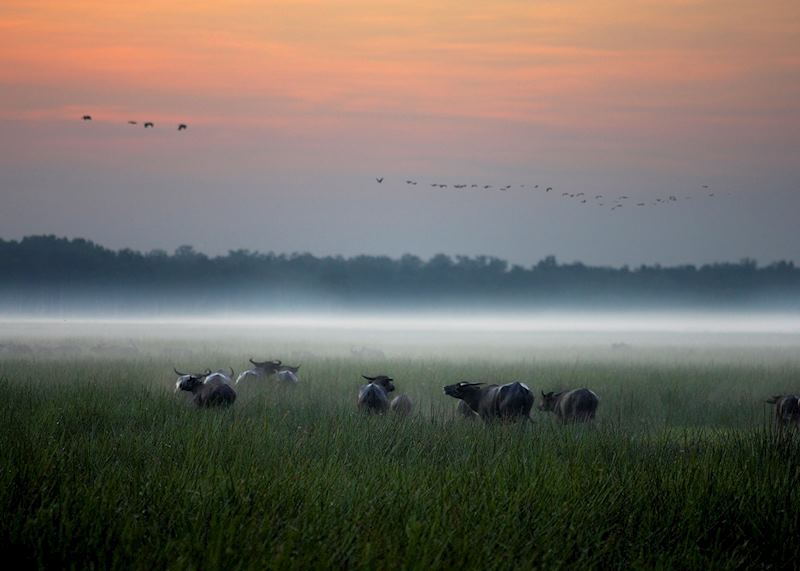

The experience of Bamurru began as soon as I met my ranger and was driven the final 30 minutes to the lodge. Open-topped and racing across red dusty roads in his ‘proper 4x4’, as he affectionately referred to it, my excitement mounted. Located on the edge of the enormous Kakadu National Park in Australia’s Northern Territory, I’d heard a lot about this hidden lodge and the huge buffalo that I could expect to be visible from my safari tent when I got there — I wasn’t disappointed.
Thanks to the design of the tent they could smell but not see me, a welcome reminder that this was going to be a stay like no other I’ve experienced in the country before. The Kakadu and surrounding Mary River Flood Plain, where Bamurru proudly sits, brim with wildlife, and activities from the lodge all involve being part of this beautiful environment.
Morning bird chorus acted as a natural alarm clock and after I’d enjoyed a hearty outdoor breakfast amid the sounds and sights of this natural haven, it was time to explore my surroundings. I opted to clamber back into that ‘proper 4x4’, this time for a wildlife spotting drive. Wallabies, kingfishers and countless other species of bird all hopped and flew before me, and my knowledgeable guide stopped frequently to identify all the life — bird, animal and plant — which previously lay camouflaged and to my inexperienced eye, would have otherwise gone unnoticed.
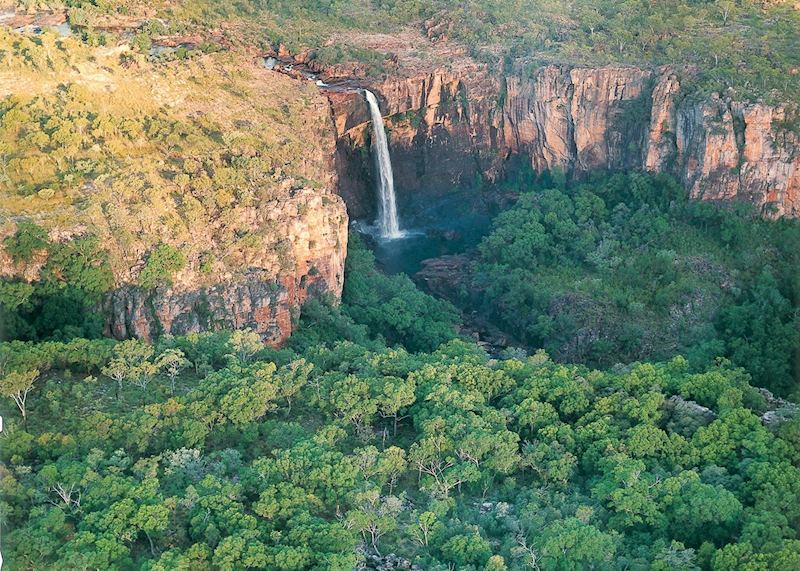
On the second day we took the airboat through the winding marshlands to try to spot some crocodiles — it was Crocodile Dundee territory after all. The floodplains act as a social hotspot for thousands of birds, which also draws the leathery predator and, poised with my binoculars, it wasn't long before we saw him, ‘Stevo’ — a beautiful big old beast, at least 3 m (10 ft) long, sunning himself on the banks. As we cut the engine and glided silently toward him we all sat in silence only broken by the occasional camera click.
Stevo slid off, the huge fan on the back of the boat started again and off we went gliding over the surface of the water, startling thousands of birds as we went. Flocks of them lifted into the air, all different colours and shapes, all making their own unique sounds as they flew from the surrounding fauna.
With no phone signal, Wi-Fi or internet at all for that matter, it felt incredibly refreshing to shut off from the rest of the world. The peacefulness and tranquillity of the plains, only interrupted by the welcome cacophony of bird and animal life, makes a stay here the ideal opportunity to get outdoors and experience the wilds of Australia in all its glory.
Walking the wilderness, Maria Island, Tasmania by Jess
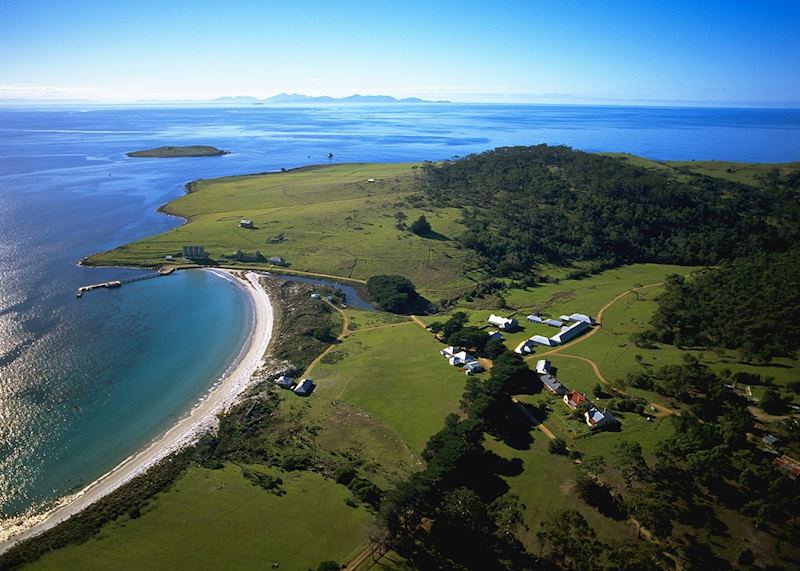

Heading out on a multi-day hike into the Tasmanian wilderness for the first time, I wasn’t quite sure what to expect. I love all outdoor pursuits and I’ve been lucky enough to hike through the Adirondacks in America, through rice paddies in Indonesia, and the Southern Alps of New Zealand, so my bar was set pretty high.
Maria Island’s combination of beautiful beaches, thick forests, mountain peaks and coastal cliffs ensured that this hike through Australia’s wilderness did not disappoint. Located in the Tasman Sea off the east coast of Tasmania and accessible only by ferry, the island is an offshore retreat and natural wildlife sanctuary with so much to explore.
My first adventure was to a beach that has been relatively untouched since explorers first discovered it. It was an enriching experience to visit somewhere so few have been before. I decided to take the optional extra hike through eucalypt forests and got to see more varied scenery in one day than I thought was possible.

The following days continued to impress with even more little-explored pristine beaches and crystal-clear waters. They stretched for miles with no-one around and no evidence of human life. After another day of hiking and sleeping to the sounds of the waves, we woke up and saw a school of wild dolphins before continuing to the peak of Mount Maria.
At multiple points on this day I had to question whether what I was seeing was real or it was all part of my imagination, viewing everything through rose-tinted glasses influenced by the thrill and excitement of being there — it was real. After hours in the forest, I came up through the clouds to reach the peak and was rewarded with striking scenery of the coastline in the distance.
I ended my visit with a walk through the lush forests that unexpectedly turned into dramatic cliffs overlooking the sea. The rock formations and stratification at Fossil Cliffs were one of the most interesting I’ve ever seen (including Uluru). It’s safe to say this walk exceeded my expectations of Tasmania and showed me it's a place all of its own that can’t be compared to Australia or New Zealand, it just has to be seen for itself.
Island-hopping, the Great Barrier Reef, Queensland, by Victoria
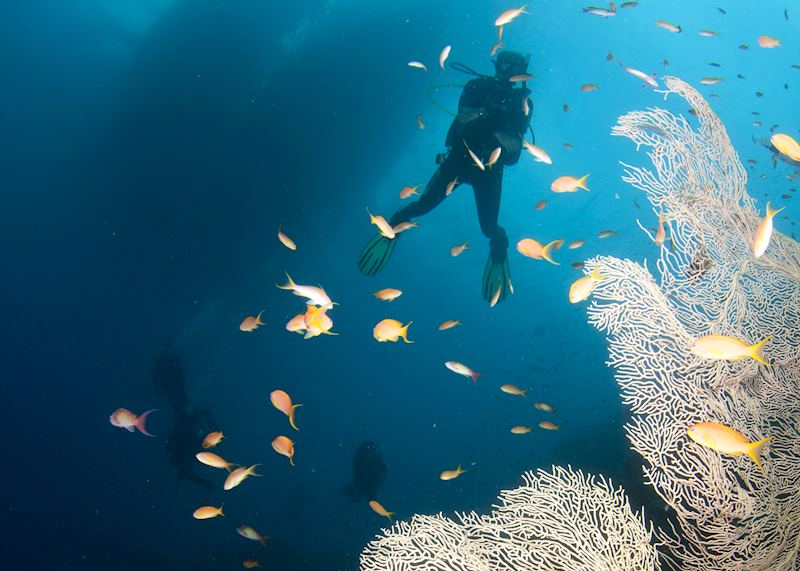

When I think 'great outdoors', I think of the beach: whether for relaxing and dining on or for using as a base to dive and explore — basically anything that results in warm, golden sand beneath my feet and being close to the water. The Great Barrier Reef fits this notion perfectly. Unfurled along the Queensland coast like a glistening underwater blanket, it provides a multitude of reef experiences and island getaways.
I have been lucky enough to visit both Heron and Lizard Island recently. These spots are very different, with Heron being more rustic and family-friendly, whereas Lizard is much more of a luxurious getaway. But the thing they have in common is that they both provide excellent up-close-and-personal access to the marine life of the Great Barrier Reef, with a wealth of activities to do in the area.
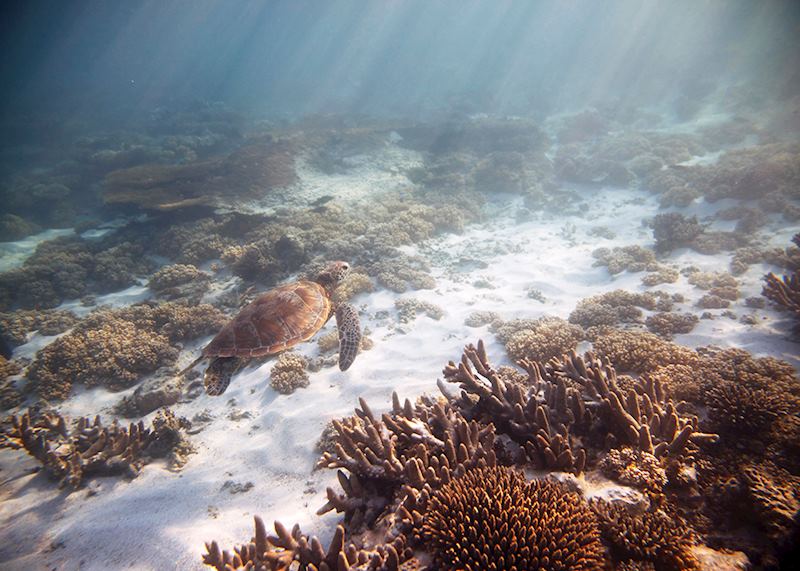
Heron Island, for me, meant waking early to birdsong (the island is a bird lovers’ idyll), donning rubber boots and going on a guided interpretive reef walking tour, followed by many blissful forages underwater — either snorkelling from the beach or on a guided boat trip, cramming in as many of the 21 dive sites that I could during my short stay. And while the island’s azure waters and golden sands offered up colours I am unlikely to forget anytime soon, the underwater kaleidoscope I encountered — not to mention manta rays with wings the size of light aircraft — became indelibly etched on my memory.
My stay on Lizard Island was, simply put, a notch above any island experience I’ve ever had. The food and wine were excellent and the accommodation and service flawless. These things, you’d hope, come as standard for a lodge of this calibre, but they are still worth writing home about.
What stood out for me, however, was the range of experiences on offer, and the incredible array of wildlife that called this island home. I walked to beautiful lookout points, then paddle-surfed and took private picnics on just a couple of its 24 deserted beaches, and was ferried around in private motorised dinghies. But the highlight was what lay beneath the water — this time in the form of a giant clam garden that I had to myself, which was the size of an underwater city and lay hidden only moments away from the water’s edge.
Beneath the waves: Ningaloo Reef, Western Australia by Chris
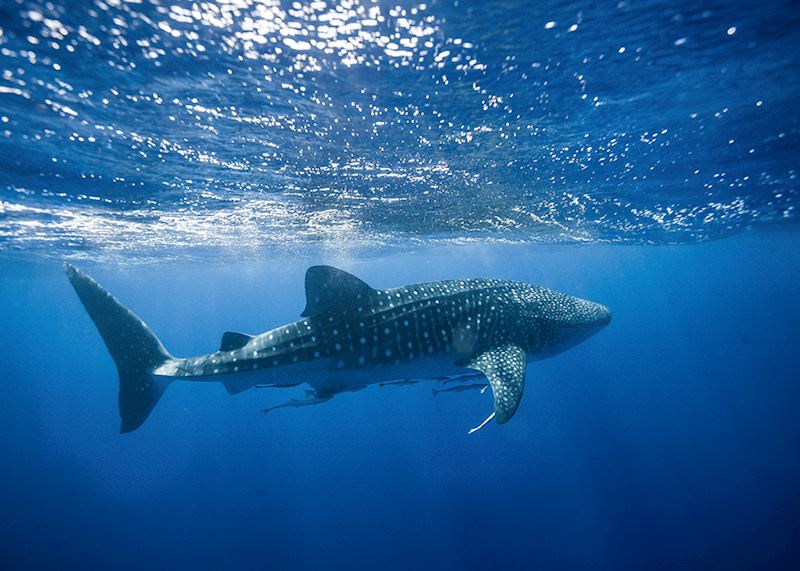
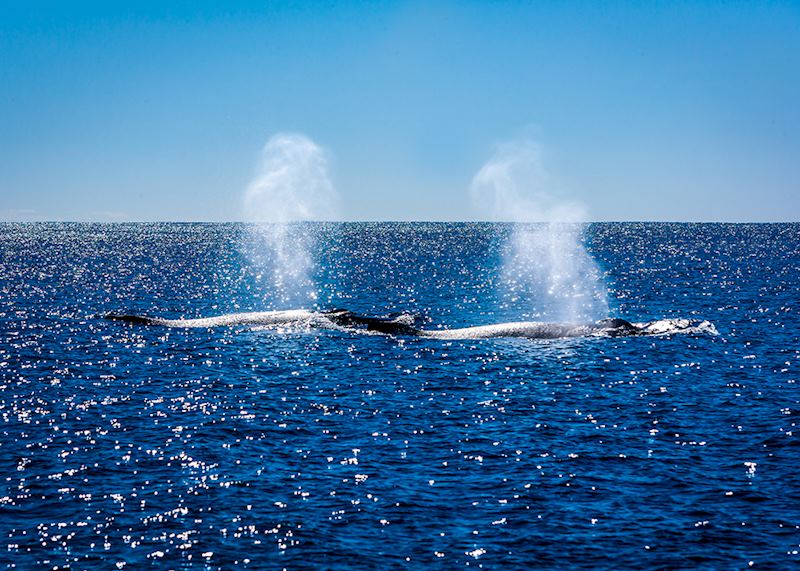
When I am asked what is the greatest difference between our Northern Hemisphere and the southern, I always comment that it is as if a veil of opaque glass has been lifted from my eyes and the world takes on a fresh intensity, which drives me to spend as much time in the great outdoors as possible. In such a vast continent it is impossible to explore everywhere but the coast of the remote northwest of Australia is one of its greatest surprises.
Nobody knew that the elusive whale shark could be so reliably encountered anywhere on Earth until fishermen stumbled across them in the late 20th century and now just a few years later, I was able to swim alongside them as they fed on the pulses of plankton that bloom there between March and early July. You need to be a strong swimmer to match them in the currents but even a fleeting encounter is to be treasured. I was fortunate enough to spot three of these giant yet harmless mammals on my most recent trip, which afforded me with some fantastic photo opportunities.

I recommend snorkelling in the calmer waters of the inner Ningaloo Reef where reef sharks, turtles, dugongs and majestic manta rays can be found in the winter months. You might even stumble across new species such as the short-nosed sea snake, thought to be extinct until it was rediscovered in December last year.
Ningaloo is a Wajarri aboriginal word meaning, 'high land jutting into the sea'. Today's reefs were once coastal cliffs sat on the ocean's edge before the most recent inter-glacial melting.
Uplifting and erosion has created the spectacular gorges through the Cape Range National Park. In the most accessible, such as at Yardie Creek, I found elusive rock-wallabies and watched wedge-tailed eagles, Australia's largest bird of prey, gliding beneath me.
Returning from an evening walk in the gorge and after dodging the multitude of marsupials coming out to feed at dusk, I watched the sun go down in a blaze of colour and then paused before dinner for one of nature’s true spectacles. One-by-one the stars and galaxies of the southern night sky appeared; a fitting, heavenly conclusion to complement the paradise on Earth that is Ningaloo.
Plan your wilderness trip to Australia
Start thinking about your experience. These itineraries are simply suggestions for how you could enjoy some of the same experiences as our specialists. They’re just for inspiration, because your trip will be created around your particular tastes.
View All Tours in AustraliaWas this useful?


